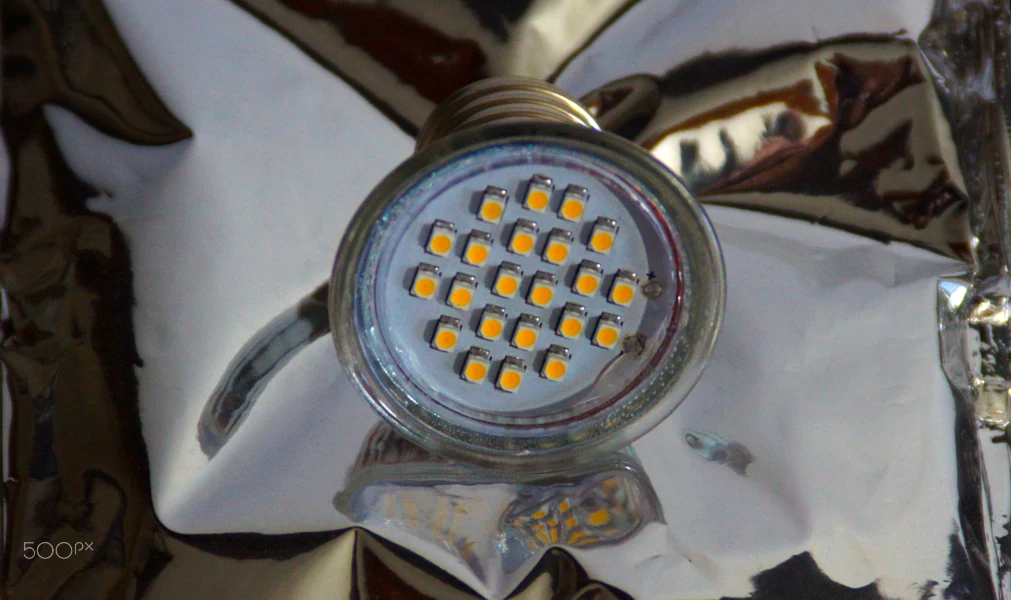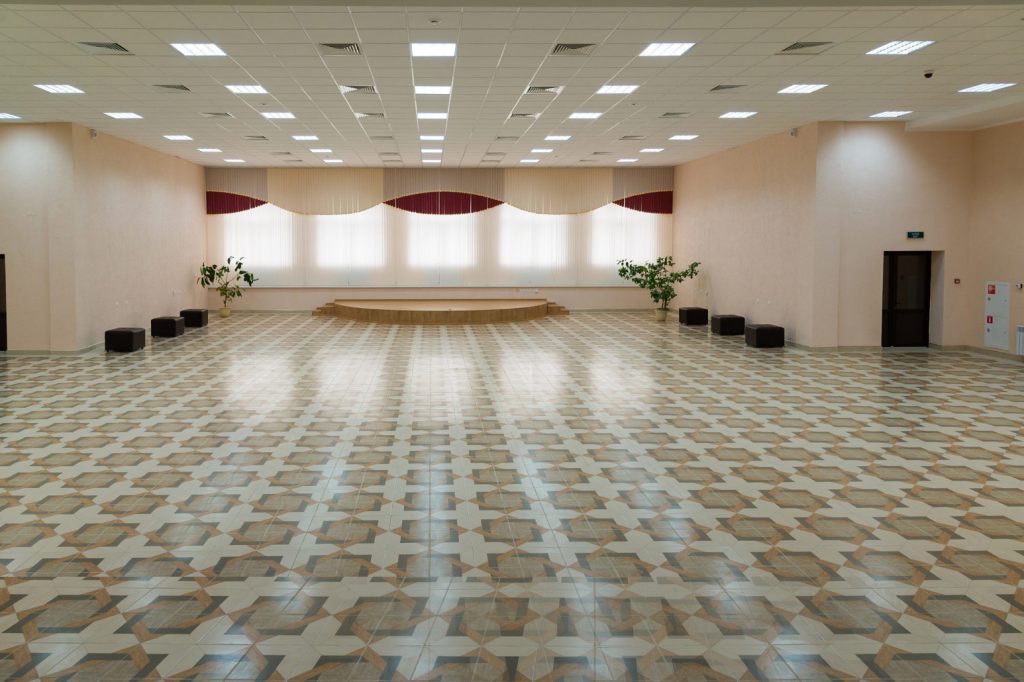Introduction
LED lighting, an advanced lighting technology that has taken the industry by storm, is all the rage in the modern world where energy conservation is a major concern. Unlike traditional lighting sources, LED lighting utilizes semiconductors to convert electrical energy into light, rendering it an eco-friendly and cost-effective option for illuminating our world.
With up to 80% greater energy efficiency and longer lifespan than traditional bulbs, LED lights are revolutionizing the lighting industry by reducing electricity bills and carbon footprint. Moreover, LED lighting provides superior quality light with improved color rendering and brightness, making it an ideal choice for an array of settings, including residential, commercial, and industrial spaces.
Despite these benefits, LED lighting is not immune to issues. Common LED lighting problems include annoying flickering, color shifting, and dimming problems, especially in large-scale commercial installations, which can be costly and frustrating to fix.
But fret not! Olamled, a leading provider of LED lighting solutions, has got you covered. With a comprehensive range of LED lighting products, Olamled is committed to addressing the common LED lighting issues. Customers can now enjoy energy-efficient and high-quality lighting without the inconvenience of flickering, color shifting, or dimming problems. So, if you’re looking for a reliable LED lighting solution, Olamled has got your back.

LED light not working
The employment of LED lighting has surged in recent years, and it has become increasingly ubiquitous due to its commendable energy efficiency, superior durability, and desirable cost-effectiveness. Nevertheless, a typical predicament that frequently arises with LED lights is when they cease to function appropriately, and this can be an incredibly vexing circumstance, especially if the lights are situated in a commercial or industrial setting.
The issue of LED lights not working can manifest due to a multifarious array of causes. One potential culprit is a defective power supply, which may be a result of a blown fuse or damaged wiring. Another contributing factor may be a malfunctioning LED driver, which oversees and regulates the power and brightness of the LED lights. Additionally, several other factors may contribute to the problem, including loose wiring, a damaged LED module, or even a faulty switch.
Addressing the issue of non-functional LED lights requires a series of strategic steps. Initially, it’s imperative to scrutinize the power supply and ascertain that it is providing the correct voltage. Once the voltage has been confirmed, it is crucial to meticulously examine the wiring and connections to ensure that they are secure and intact. If the wiring and connections are found to be in good condition, then it is crucial to conduct a thorough assessment of the LED driver for any malfunctions. If a fault or issue is identified with the driver, then the only recourse may be to replace it.
LED light not working but has power
The enigmatic nature of LED lights can confound even the most astute observer, particularly when they exhibit power but fail to operate. This issue can present a perplexing challenge, as uncovering the root cause of the malfunction is a formidable task.
The quandary of LED lights not working despite being powered can stem from a multitude of sources. One potential culprit is a faulty LED driver, the crucial component responsible for controlling the power and current flow to the LED lights. A flawed driver can result in the LED lights receiving an incorrect amount of power, leading to their malfunction or complete failure to function. Another conceivable cause is a damaged LED module or circuit board, which can result in the lights exhibiting suboptimal performance or failing to illuminate altogether.
To address the problem of LED lights not working despite having power, there are several investigative measures that can be taken. First and foremost, it is imperative to check the LED driver and confirm that it is operating correctly. This can be accomplished by measuring the voltage and current flow to the LED lights. In the event of a faulty driver, a replacement may be necessary. Additionally, scrutinizing the LED modules and circuit board for signs of damage or loose connections can also aid in identifying the cause of the problem.
LED lights won’t turn on
LED lights – the energy-efficient, durable, and long-lasting lighting option that has taken the world by storm! Nevertheless, as with anything in life, there’s always a catch. One of the most perplexing predicaments that LED lights aficionados may encounter is when their precious luminaires decide not to turn on. This is not only exasperating but can also be quite the predicament, especially if the lights are required for a specific purpose.
The enigma of LED lights not turning on can stem from various factors. One of the probable reasons could be a conundrum with the power source. This might be in the form of a tripped circuit breaker or blown fuse, which can cause the power supply to the LED lights to be disrupted. Another possible root of the problem could be a defective or damaged switch that governs the power supply to the lights. In addition to this, loose or damaged wiring, a faulty LED driver, or a damaged LED module can also play a role in the enigma.
To resolve the issue of LED lights not turning on, one must take several steps. The first step involves checking the power source and ensuring that it’s providing the correct voltage. If the power source is functioning correctly, the next course of action is to check the wiring and connections. One must meticulously examine the wiring and connections to ensure that they are secure and intact. If the wiring and connections are in good condition, the switch should be scrutinized for any malfunctions. If a problem is identified with the switch, it may need to be replaced.
LED lights buzzing
The use of LED lights has surged in popularity thanks to their efficiency and longevity, but they can sometimes be noisy, emitting an annoying buzzing sound. This sound can be a sign of a problem within the lighting system, which can cause distractions and headaches. The buzzing noise in LED lights is often caused by a malfunctioning LED driver, the component responsible for controlling the power and current to the lights. A defective driver can lead to flickering or a buzzing sound. Other causes may include poorly insulated fixtures or loose connections, as well as the use of LED lights with the incorrect wattage. Fortunately, there are steps you can take to silence those pesky buzzing LED lights. The first step is identifying the source of the issue by examining the LED driver and fixture for any damage or loose connections. If the issue is due to a faulty component, it may need to be replaced. Additionally, ensuring that the LED lights have the appropriate wattage and are correctly installed can help to prevent buzzing.
LED light colors are wrong
LED lights have long been admired for their adaptability, and they come in an array of colors to match any mood or setting. Nevertheless, the experience can be frustrating when the LED lights produce an off-color hue or exhibit an inconsistent color temperature, which can seriously affect the ambiance of a room.
The issue of LED lights producing the wrong color or inconsistent color temperature can be triggered by numerous factors. One probable cause is an issue with the LED driver, which can impact the color rendering index (CRI) of the lights. Furthermore, using the wrong color temperature or unsuitable dimming options can exacerbate the problem. Subpar quality or flawed LED bulbs can also result in an erratic color appearance.
To solve the problem of LED lights producing the wrong color or inconsistent color temperature, there are a few things that can be done. First, it’s crucial to ensure that the LED driver and dimming controls are compatible with the LED lights being used. It’s also important to choose the correct color temperature and to use high-quality LED bulbs that are designed for the specific application. If the issue continues, it may be necessary to seek advice from a lighting professional or replace the LED lights entirely.
Flickering LED Lights
LED lights are notorious for flickering, a vexing problem that can throw off the entire atmosphere of a room. Understanding the root causes of flickering LED lights and potential remedies can aid users in resolving this issue.
Flickering LED lights may result from a variety of factors. One of the most prevalent causes is an incompatible dimmer switch. LEDs necessitate a particular sort of dimmer switch that is tailored to their electronic components. Using an incompatible dimmer switch can result in the LED lights flickering or even failing.
Voltage fluctuations are another culprit of flickering LED lights. LEDs necessitate a stable voltage to function correctly. Voltage fluctuations caused by electrical system issues, such as wiring difficulties or overloaded circuits, can cause the LED lights to flicker or dim.
To address flickering LED lights, there are a few options users can take. First, they can investigate if the dimmer switch is compatible with LED lights and replace it if necessary. Second, they can examine the electrical system for any wiring difficulties or overloaded circuits and have them repaired by a licensed electrician. Finally, replacing the LED bulbs or fixtures with ones that are specifically designed to work with the existing electrical system may be beneficial.
Glare
Glare is a vexing problem that is often encountered with LED lighting installations, especially in cases where the lights are placed in a manner that causes direct light to hit the eyes. This can cause discomfort, eye strain, and even headaches in some people, thus deteriorating the overall lighting experience. Understanding the causes of glare and how to mitigate the problem can significantly improve the visual comfort of users.
There are several reasons why LED lighting installations can result in glare. One of the most prevalent reasons is the use of inappropriate light fixtures or bulbs that do not direct light in a specific direction. When light is not directed correctly, it can cause unwanted glare that is both discomforting and distracting. Another contributing factor to glare is the usage of excessive light in a space. When there is too much light in a given area, it can reflect off surfaces, especially shiny ones like floors or walls, leading to unwanted glare.
To tackle the issue of glare, there are several measures that users can take. Firstly, users can substitute unsuitable light fixtures or bulbs with ones that direct light in a specific direction, thus reducing the possibility of unwanted glare. Secondly, users can modify the positioning of the lights or add light diffusers to soften direct light, mitigating the discomfort caused by glare. Finally, users can adjust the overall lighting levels in a space by reducing the number of lights or lowering the brightness of the fixtures to curb unwanted glare.
Poor Dimming Performance
Explanation of the problem: LED lights are known for their efficient and flexible dimming capabilities. However, poor dimming performance is a common problem with LED lighting. The issue can manifest in various ways, including flickering, sudden changes in brightness, or inconsistent dimming across different bulbs or fixtures.
Causes of the problem: Poor dimming performance can be caused by several factors. One common cause is incompatibility between the LED lights and the dimmer switch. Some LED lights require specific types of dimmer switches, and using the wrong type can result in poor performance. Another factor is the quality of the dimmer switch itself. Low-quality or old dimmer switches may not be able to properly regulate the flow of electricity, leading to flickering or inconsistent dimming. Finally, wiring issues, such as incorrect wiring or loose connections, can also cause poor dimming performance.
Solutions to the problem: To address poor dimming performance, it is important to first identify the root cause. If the issue is due to incompatibility between the LED lights and the dimmer switch, replacing the switch with a compatible one can solve the problem. Upgrading to a higher-quality dimmer switch or ensuring proper wiring can also improve dimming performance. In some cases, it may be necessary to consult with a professional electrician to troubleshoot and fix the issue.
Overheating
LED lighting has gained popularity for its energy efficiency, but overheating is a daunting problem that can negatively impact its performance and longevity. When LED lights get too hot, they start losing their cost-effectiveness and can even get damaged.
Multiple factors contribute to overheating in LED lighting, including poor ventilation, high ambient temperatures, and improper installation. Besides, using incompatible or low-quality dimmer switches can cause overheating, as can exceeding the fixture’s maximum wattage limit.
To mitigate the overheating issue in LED lighting, proper ventilation and cooling of the fixtures are imperative. One can achieve this by positioning the fixtures in areas with better airflow or installing cooling fans. Using high-quality, compatible dimmer switches specially designed for LED lighting is also critical.
Choosing LED bulbs with lower wattage ratings than the fixture’s maximum capacity can prevent overheating. Finally, proper installation, including securely connecting all components and properly securing excess wiring, is necessary to prevent overheating.
By addressing the overheating issue in LED lighting, users can ensure that their LED lights remain energy-efficient and cost-effective in the long run.
Incompatible Dimmer Switches
LED lighting is a modern and avant-garde solution that offers a plethora of benefits, including longer lifespan and reduced energy consumption. However, one recurring issue that continues to plague users is the incompatibility with dimmer switches. This exasperating problem manifests in a variety of ways, such as flickering, inadequate dimming, and complete failure to illuminate.
The principal cause of this predicament is the fact that not all LED lights are designed to be dimmed, and not all dimmer switches are compatible with LED lights. To make matters worse, some LED lights necessitate a particular type of dimmer switch that can be challenging to identify amid the vast array of options available.
To resolve the incompatibility of dimmer switches, it is crucial to ensure that the LED light is compatible with the dimmer switch before installation. One approach to achieving this is by reviewing the list of compatible dimmer switches that some LED lights come with. However, other LED lights require a specific type of dimmer switch that is exclusively designed for LED lights, which can prove to be a daunting task to accomplish.
Notwithstanding, all hope is not lost for users grappling with incompatible dimmer switches. Retrofitting existing dimmer switches with a compatible LED dimmer switch can prove to be the ultimate panacea for this problem. By ensuring compatibility between the LED light and dimmer switch, users can avoid flickering and other associated issues that can lead to a longer lifespan of the LED light.
Incorrect Installation or Positioning
LED lighting is a breakthrough technology that delivers a wide range of benefits, from superior lighting quality and energy efficiency to longer lifespan. Nonetheless, achieving optimal performance from these lights hinges on proper installation and positioning. Incorrect installation or positioning could lead to various issues, including poor lighting quality, flickering, and even electrical hazards. That’s precisely why it’s crucial to heed the manufacturer’s instructions with utmost caution when installing LED lights.
One common error that many people commit is installing LED lights in a manner that obstructs proper air flow. This, in turn, can trigger overheating, leading to potential damage. Another common issue that arises from improper installation or positioning is flickering, which could be a cause for performance-related concerns.
To circumvent these complications, it is pivotal to make sure that LED lights are installed in a way that permits adequate ventilation and all wiring and connections are correctly installed and secure. In addition, verifying that the lights are in the correct position is fundamental to ensure optimal lighting coverage and avoid glare or other visual aberrations.
If you’re uncertain about the proper installation or positioning of your LED lights, the most prudent option is to seek guidance from a professional to guarantee that they are installed safely and effectively. After all, the ramifications of an improperly installed or positioned LED light could lead to undesirable and avoidable consequences.
Reduced Lifespan
LED lights are often touted as being super long-lasting, but sometimes they just don’t seem to cut it. A shorter lifespan can be a real headache for homeowners and businesses alike, leading to more frequent replacement and higher maintenance costs. The most common culprit behind a reduced lifespan is shoddy workmanship and poor-quality LED lights that are more susceptible to wear and tear. But that’s not all – overheating, incorrect installation, and exposure to the elements can all contribute to an early demise. To avoid these pitfalls, it’s critical to select high-quality LED lights and make sure they are installed and positioned correctly. Don’t forget about routine upkeep too, like sprucing up the fixtures and swapping out damaged parts, which can go a long way in stretching the lifespan of your LEDs.
Premature Failure
Premature failure is a common problem with LED lighting that can lead to frustration and added expenses. The problem occurs when the LED light stops working or significantly reduces in brightness before the end of its expected lifespan. The causes of premature failure can be numerous and complex, including voltage spikes, overheating, poor quality components, or incompatible fixtures. Other factors such as improper installation, exposure to harsh weather, or power surges can also contribute to this problem.
The solution to premature failure in LED lighting depends on identifying the root cause of the problem. Sometimes, a simple adjustment to the electrical system or fixture may be all that is necessary. Other times, it may be necessary to replace the LED light or fixture with a higher quality, more durable product. Proper installation and maintenance, along with selecting the right LED light for the application, can also help to prevent premature failure and ensure a longer lifespan for your LED lighting.
EMI Interference
EMI interference can cause problems with LED lighting, leading to flickering or poor performance. EMI stands for electromagnetic interference and is caused by electromagnetic waves from other devices or sources, such as radios or power lines, interfering with the operation of the LED lights. This can result in reduced light output or poor color rendering, making the lighting less effective or even unusable.
Causes of EMI interference can include the design of the LED lighting system or the presence of other electronic devices or sources of electromagnetic waves in the vicinity. Shielding or grounding the LED lighting system can help reduce EMI interference, as can avoiding placing the lights near other electronic devices or power lines.
Solutions to EMI interference can include using specialized LED lighting that is designed to be immune to electromagnetic interference or installing filters or shielding to reduce the impact of EMI on the lighting system.
Troubleshooting LED Lights
LED lights have become a favored lighting option for their energy efficiency and longevity. However, despite their many benefits, LED lights can sometimes encounter issues that require troubleshootingin order to diagnose and repair. Effective troubleshooting techniques are critical to prevent unnecessary expenses and ensure the LED lights function safely and effectively.
To begin troubleshooting LED lights, it is important to familiarize oneself with common issues such as flickering, buzzing, and color discrepancies. The first step in troubleshooting is to confirm that the power supply is functioning properly and that the LED lights are properly connected. If these are not the issue, the LED driver and dimmer switch should be checked for any defects. Additionally, inspecting the LED lights themselves for any signs of damage or defects is also important.
Proper troubleshooting techniques are crucial to avoid the costly mistake of replacing perfectly functioning LED lights or risking electrical hazards. Utilizing a step-by-step guide for troubleshooting LED lights can help ensure an accurate diagnosis and repair. With the right knowledge and tools, troubleshooting LED lights can be a straightforward process that saves time and money in the long term.

Olamled – A Reliable Solution to Common Problems with LED Lighting
Olamled is a trusted and reliable solution to the common problems associated with LED lighting. With years of experience in the industry, Olamled offers a range of innovative and high-quality LED lighting products that address various lighting issues.
Whether you are dealing with flickering lights, dimming performance, or color inaccuracies, Olamled has the solutions to meet your needs. Their products are designed with cutting-edge technology and superior craftsmanship, ensuring long-lasting and consistent performance.
Choosing Olamled has many benefits, including improved energy efficiency, reduced maintenance costs, and a longer lifespan for your LED lighting. Plus, their team of experts is available to provide technical support and guidance, ensuring that you get the right products for your specific needs.
So, if you want to avoid the common problems associated with LED lighting, choose Olamled for your next lighting project. With their reliable solutions, you can enjoy efficient, high-quality lighting that will enhance your space and reduce your energy costs.
What you can expect from olamled
- High-quality products
- Innovative technology
- Superior craftsmanship
- Improved energy efficiency
- Technical support and guidance
Conclusion

LED lighting technology has come a long way in recent years, providing energy-efficient and cost-effective lighting solutions for various applications. However, it is not without its common problems, including flickering, buzzing, glare, incorrect colors, poor dimming performance, overheating, and others.
Fortunately, Olamled provides a reliable solution to these problems with its high-quality LED lighting products and advanced technology. From its flicker-free and glare-reducing fixtures to its high color rendering index and efficient dimming capabilities, Olamled offers a range of solutions to meet any lighting need.
In choosing Olamled, customers can enjoy the benefits of improved lighting quality, reduced energy consumption and costs, and increased durability and lifespan of their lighting fixtures. With its commitment to innovation and customer satisfaction, Olamled is a trusted and reliable choice for all LED lighting needs.
We recommend choosing Olamled as a solution to common problems with LED lighting, and we encourage customers to invest in high-quality LED lighting products for a brighter and more sustainable future.



